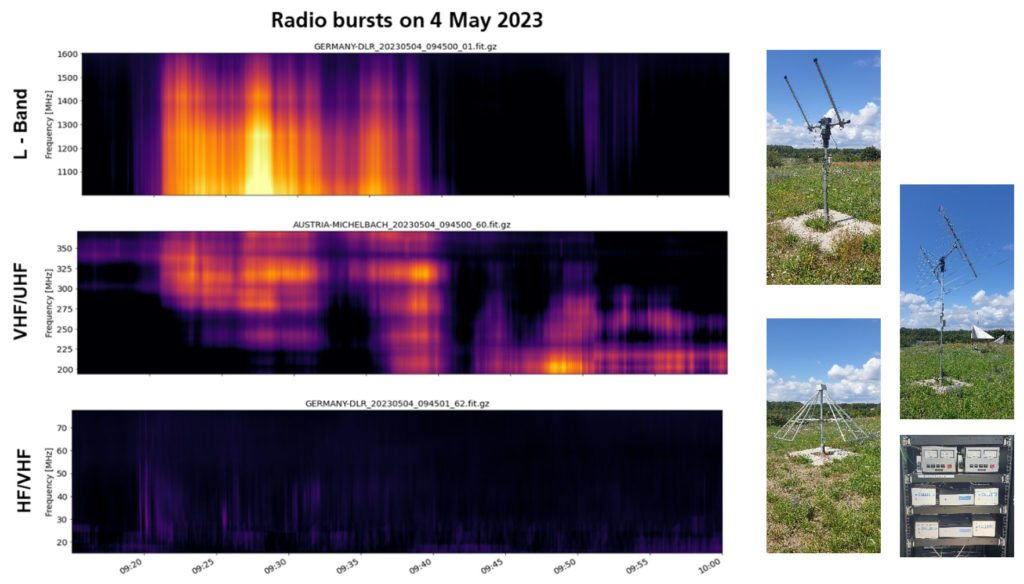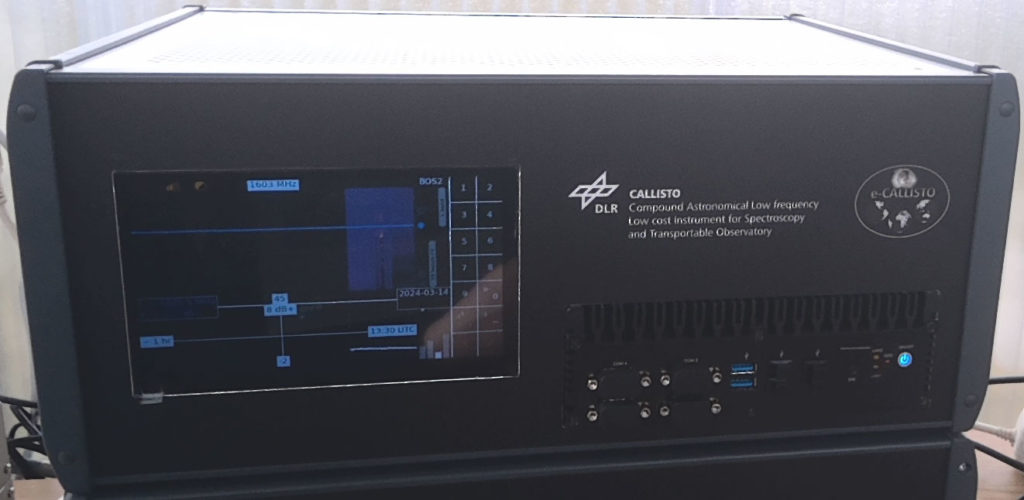The CALLISTO spectrometer is a programmable heterodyne receiver (Compound Astronomical Low frequency Low cost Instrument for Spectroscopy and Transportable Observatory). Its main applications include the observation of solar radio bursts and the monitoring of radio frequency interference.
Solar radio bursts are sudden emissions of high-energy particles and electromagnetic radiation from the Sun, occurring in various frequency ranges from kilohertz to gigahertz. They are often associated with solar flares and coronal mass ejections, events which intensify during periods of high solar activity such as the solar maximum every 11 years or so.
Solar radio bursts can affect global navigation satellite systems (GNSS) and radio frequency (RF) communication systems by causing interference and signal degradation at the receiver.
The global CALLISTO network enables the monitoring of solar radio bursts, with currently around 70 globally distributed stations regularly providing data. DLR develops and operates three types of receiver in various spectral ranges for this purpose. Each CALLISTO station consists of an antenna, a preamplifier, a heterodyne receiver (the actual CALLISTO spectrometer) and a computer.
The programmable receiver uses a modern, commercially available CD1316 broadband cable TV tuner, covering frequencies of 45–870 megahertz with a resolution of 62.5 kilohertz. The range can be switched to other frequencies using a heterodyne up- or down-converter. DLR receivers also cover ranges of 10 megahertz to 1.6 gigahertz. The type of antenna is selected based on the frequency range, and some antennas are even adjusted automatically to the position of the Sun using controllable rotors.
The CALLISTO monitoring software provides FITS files with up to 400 frequencies per sweep. The data is stored locally on each computer and can be uploaded via FTP to the central server of the University of Applied Sciences and Arts Northwestern Switzerland (FHNW). The data from the stations set up by DLR are entered into the Ionosphere Monitoring and Prediction Center (IMPC) where, together with other established products such as TEC or ROTI maps, the data is processed for further use.
Link:
German Aerospace Center (DLR)
Institute for Solar-Terrestrial Physics
E-Mail contact-dlr@DLR.de
The e-Callisto network. Each instrument is labelled by its observed frequency range, and there may be several instruments at a given location (source: DLR).


